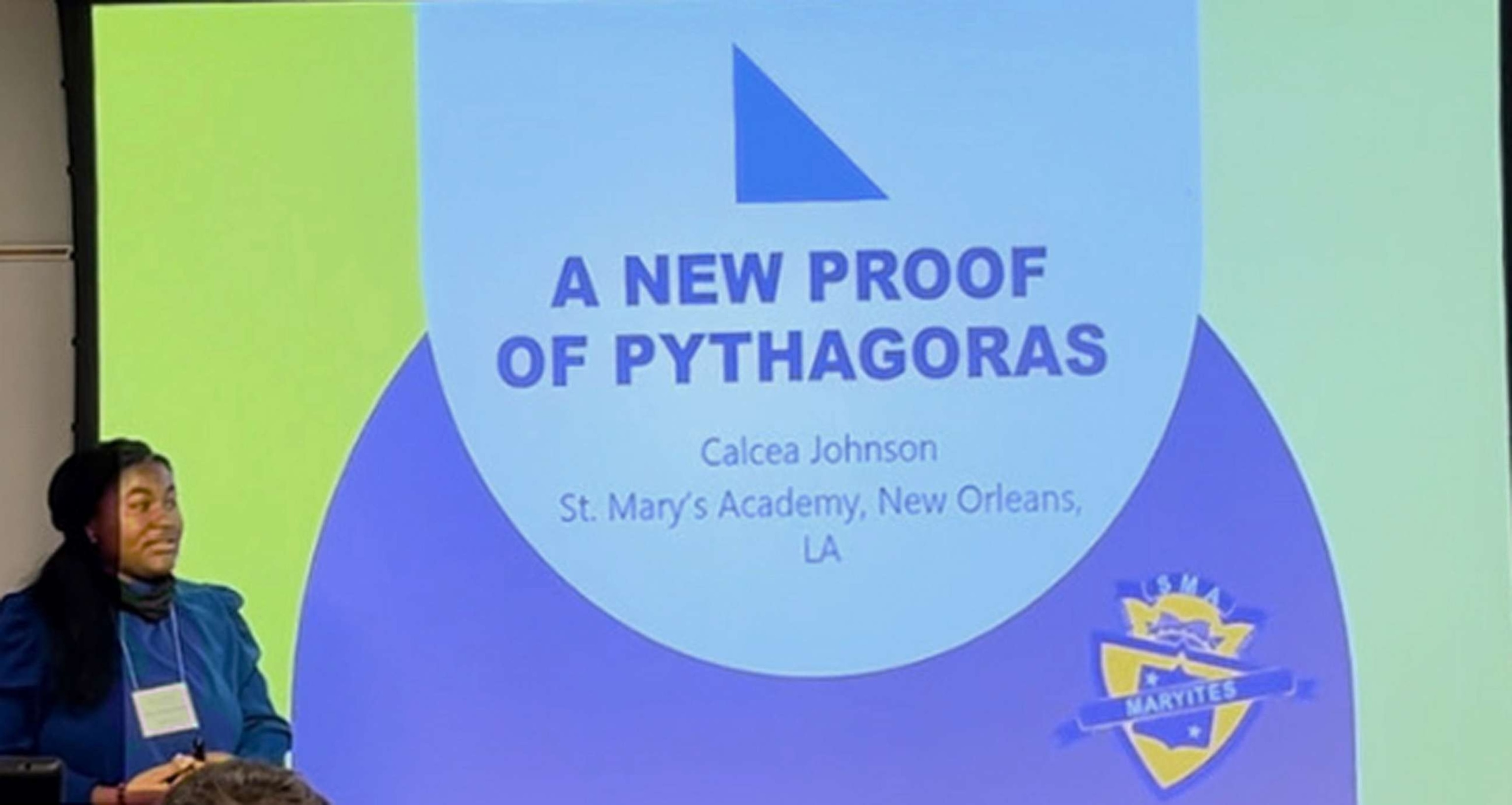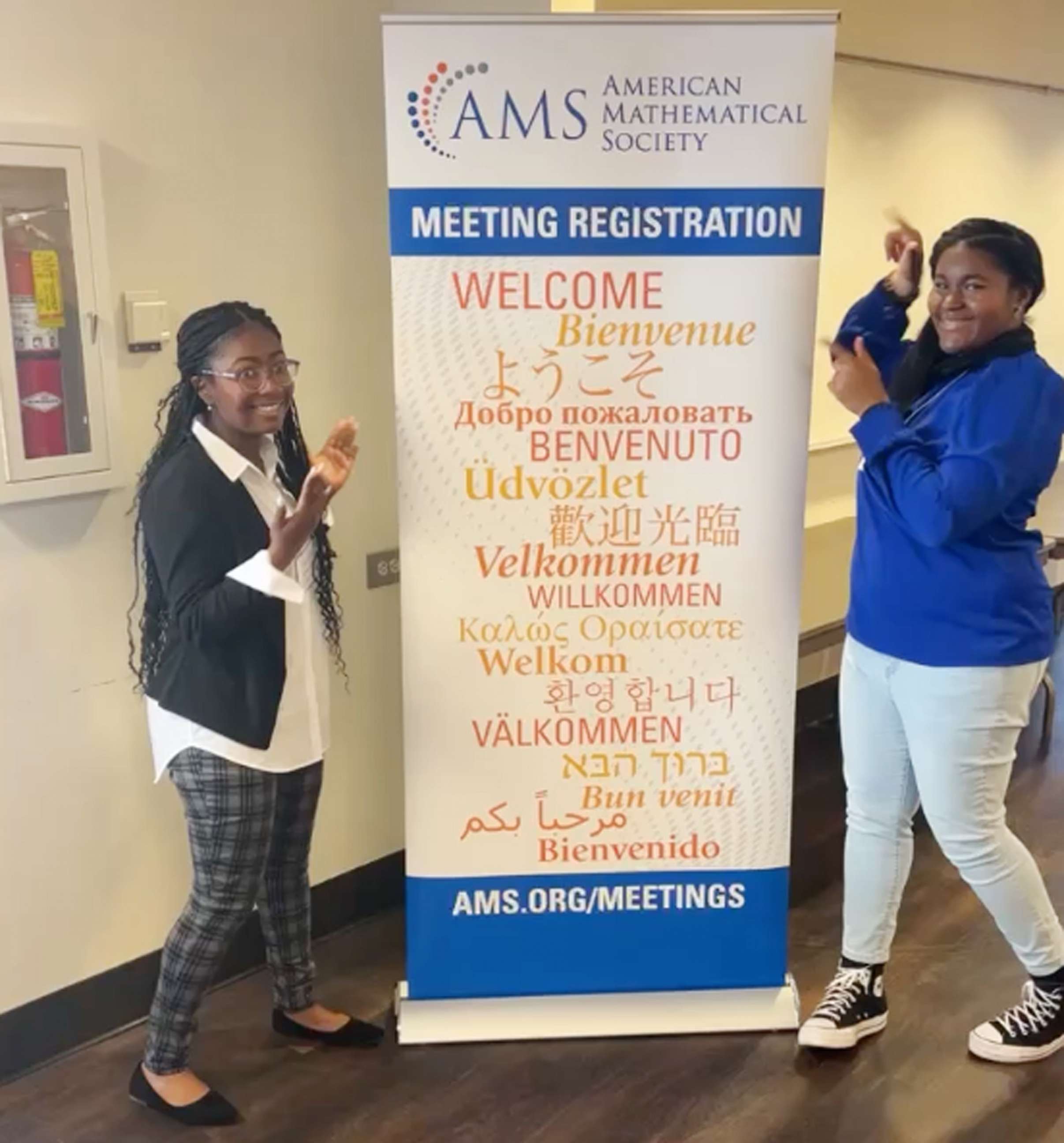2 New Orleans teenagers say they proved the 2,000-year-old Pythagorean Theorem
The high schoolers presented their theory at a national mathematics conference.
Two Black teenage girls from New Orleans say they could be the first mathematicians in at least 2,000 years to find trigonometric proof for the Pythagorean Theorem.
"After we get it peer reviewed and if it is approved, we would publish it in an undergraduate journal," Calcea Johnson, one of the high school mathematicians, said. "And then it would be cemented in, pretty much, the math world."
According to Johnson and her classmate, Ne'Kiya Jackson, the high school seniors of St. Mary's Academy could be the first to use trigonometry to prove the Pythagorean Theorem.
The Pythagorean Theorem (a2 + b2 = c2) is usually taught in high school geometry and represents the theory that the two sides of a right triangle, when squared, equal the square of the hypotenuse, according to Johnson.
According to UCLA's computer science department, scholars in ancient Babylon and Egypt knew of the theorem and it was displayed on a 4000-year-old Babylonian tablet. Pythagoras was an ancient Greek philosopher who revealed it to the western world nearly 2000 years later.

"Well, it all started with a math contest that was taught at our school," Jackson said when asked why they attempted to find proof of the theorem. "And there was a bonus question."
According to Jackson, the bonus question was to find a new proof of Pythagoras.
"It has been done in the past by other people, but the proofs have not really been trigonometric," Johnson said. "They've been like algebraic or like calculous based, but this is really using like the trigonometric rules."
According to the high school seniors, the teenagers presented their study at the American Mathematical Society's Annual Southeastern Conference where they were the only high school students to attend and present.
"At first, going up I was very nervous," Jackson said. "But once I got up and started talking, it felt like the words just started to float."
But Johnson and Jackson's theory has not yet been academically peer-reviewed to prove the validity, according to Dr. Catherine Roberts, the executive director of the American Mathematical Society. She says she is worried that their findings may be blown out of proportion.

"Indeed, I am concerned about this story going viral," Roberts said in a statement to ABC News. "The important thing to celebrate is two young African American women presenting their math research at a major conference, which is a rare thing since most speakers are in college or above."
St. Mary's Academy said the institution is in the process of preparing the teens' research to be turned in for peer review. The school wasn't able to estimate when it would be ready for review but said it "shouldn't be too long."
Once the two teenagers feel their argument is cohesive and "self-standing," they would submit their study to a scientific journal, the American Mathematical Society (AMS) told ABC News in a statement. The journal would then send the research to "peers" who are experts in that field to make their assessments. The process could take months and even years in some cases, according to AMS.
"I am personally unfamiliar with the hundreds of existing proofs of the Pythagorean Theorem," Roberts said. "But from online conversations this week, it appears to me that there very well may already be existing proofs through trigonometry. So -- even if their work ends up being certified as technically correct, it may or may not be a new contribution to the literature."
Regardless of whether the findings end up becoming a new contribution to more than 2000 years of mathematical research, Johnson and Jackson still have their whole lives ahead of them and are focused on their plans for the future.
When asked about their upcoming goals, Johnson replied, "Just going to college and finishing out our high school careers."




